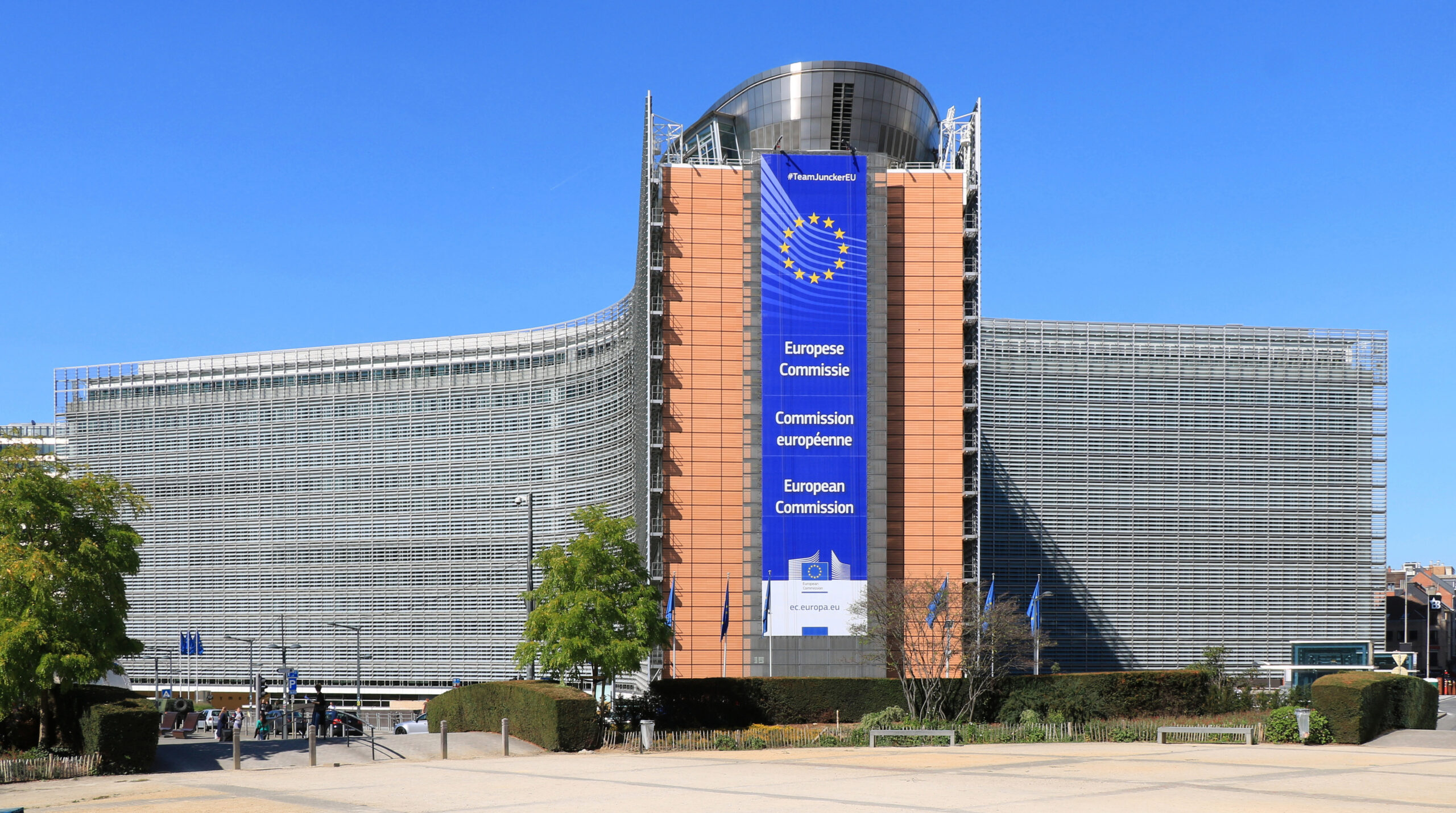A new Reich in the Red Dawn of the Digital Era (third part) (English version at the end of this article)
Ani de zile am crezut în democrația, legile și instituțiile europene, în promisiunile sale politice pentru o viață mai bună, așteptând să aducă pace și prosperitate tuturor. La fel ca mulți dintre noi, am fost un credincios naiv și le-am înghițit promisiunile.
Astăzi, a crede în visul european mi se pare la fel de iluzoriu ca și cel american. „Trebuie să dormi ca să crezi”, așa cum spunea George Carlin despre visul american. Recunosc sincer că nu sunt o mare admiratoare a pseudo-democrațiilor, marilor imperii, revoluțiilor eterne sau a războaielor perpetue. Nicio negatoare a culturii occidentale. Nu am respins niciodată Occidentul. Ceea ce resping este doar gunoiul pe care UE încearcă să ni-l vândă prin orice fel de mijloace și care nu aparține tradiției sale moștenite.
Poate că mizeria a fost acolo de la bun început și nu am văzut-o. Un bun prieten mi-a spus odată că ceva e putred acolo unde sunt mulți bani. Și ceva a fost putred în modul în care mișcarea paneuropeană și-a primit finanțarea. Ceva a fost ciudat cu toate Comunitățile Europene care au urmat după, care s-au extins atât de repede și au fuzionat într-o Uniune, cu viziunea lor globală pentru o Piață Comună.
„Bestia” de la Bruxelles
Această ciudățenie a ieșit la suprafață în timpul unei reuniuni de criză din ’74, convocată de liderii Pieței Comune de la Bruxelles care a adunat mulți oameni de știință, consilieri și analiști economici, printre care se număra și dr. Hanrick Eldeman. Scopul întâlnirii: haosul economic în care lumea părea să se scufunde. Soluția: un supercomputer cu trei etaje.
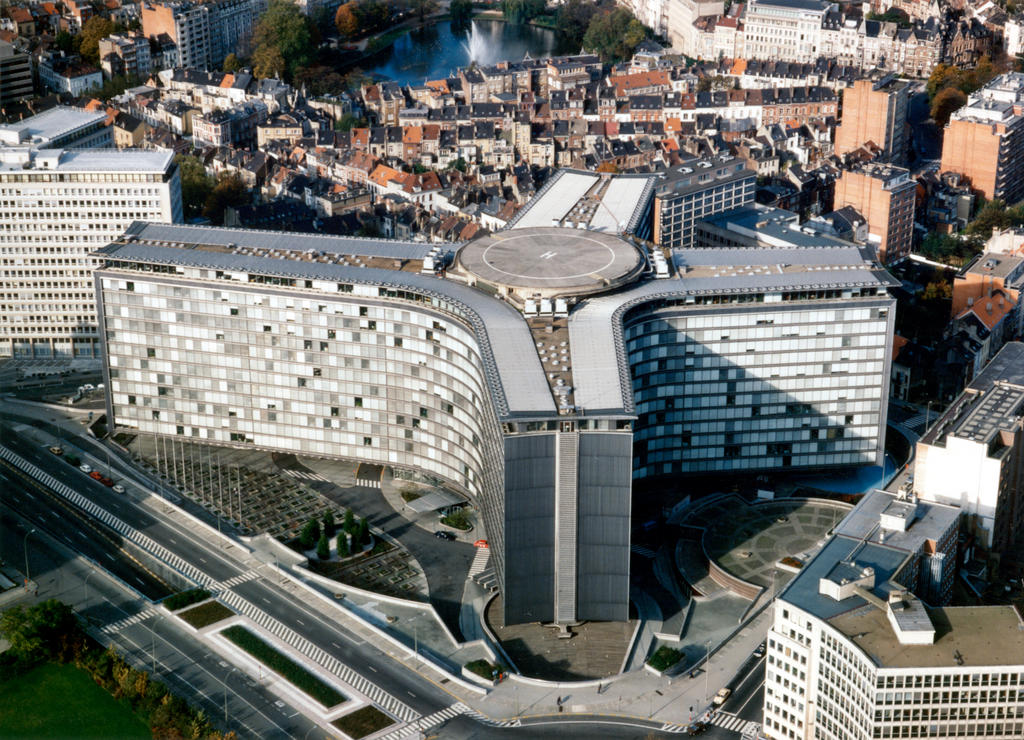
„Bestia” – cum a fost numit acest supercomputer, dezvăluit audienței de Dr. Eldeman – este un computer cu autoprogramare situat la sediul Comisiei Europene, în clădirea Berlaymont din Belgia. Și servește „pentru înregistrarea fiecărei persoane din lume cu un număr de 18 cifre, unde cifra inițială a fiecărui număr este 666” (vezi blogul Curiosities of Technology, The super computer ‘The beast’, 2015).
Liderii șefi ai Pieței Comune, lumea finanțatorilor internaționali, alături de experții IT, au perfecționat un plan general de mai bine de un deceniu pentru a impune un nou sistem mondial de comerț și numerotare. Într-un viitor nu prea îndepărtat, întregul comerț al lumii va fi gestionat de acest computer gigantic care este invenția Pieței Comune. Aceasta va implica un sistem de numerotare digitală a fiecărei ființe umane.
După Gilberte Côté-Mercier, „calculatorul ar oferi fiecărui locuitor al lumii un număr care să fie folosit pentru fiecare cumpărare sau vânzare, eliminând problema cardurilor de credit actuale”. Numărul „ar fi tatuat invizibil cu laser, fie pe frunte, fie pe dosul mâinii”, și va putea fi văzut doar prin scanere cu infraroșu în locurile publice, instituind astfel un nou sistem de credit card ambulant (vezi lucrarea lui Gilberte Côté-Mercier (Québec), „The Beast of the Apocalypse: 666, A Gigantic Self-Programming Computer”, în volumul colectiv al lui Robert O’Driscoll și Elizabeth Elliott, New world order: Corruption in Canada, 1994).
Acest lucru a fost confirmat mult mai devreme printr-o publicație a vremii din ’76, buletinul informativ Revelations of Awareness, în care se menționează că „sistemul bancar este pregătit să-și schimbe sistemul economic într-un sistem computerizat în care toate entitățile ar folosi un card și un număr mai degrabă decât numerar, cecuri sau credit” (a se vedea The Mark of the Beast, pe https://www.bibliotecapleyades.net).
Numărul guvernamental emis de computerul central-Bestie de la Bruxelles, în timpul unei crize majore, va fi tatuat invizibil printr-un fascicul laser sau va fi implantat printr-un microcip sub piele, care va înlocui numerarul împreună cu vechiul sistem bancar. Acesta va fi numărul de identificare de la naștere până la moarte pentru fiecare ființă de pe planetă.
Buletinul informativ de conștientizare mai spune că „Fiara” este strâns legată de 270 de bănci de pe continentul european, de anumite bănci din Statele Unite și din Rusia și, vom adăuga, Banca Mondială. În numele haosului economic, al păcii și securității lumii, elita va cere o monedă mondială și o amprentă internațională. Cât de departe suntem de acele vremuri întunecate?
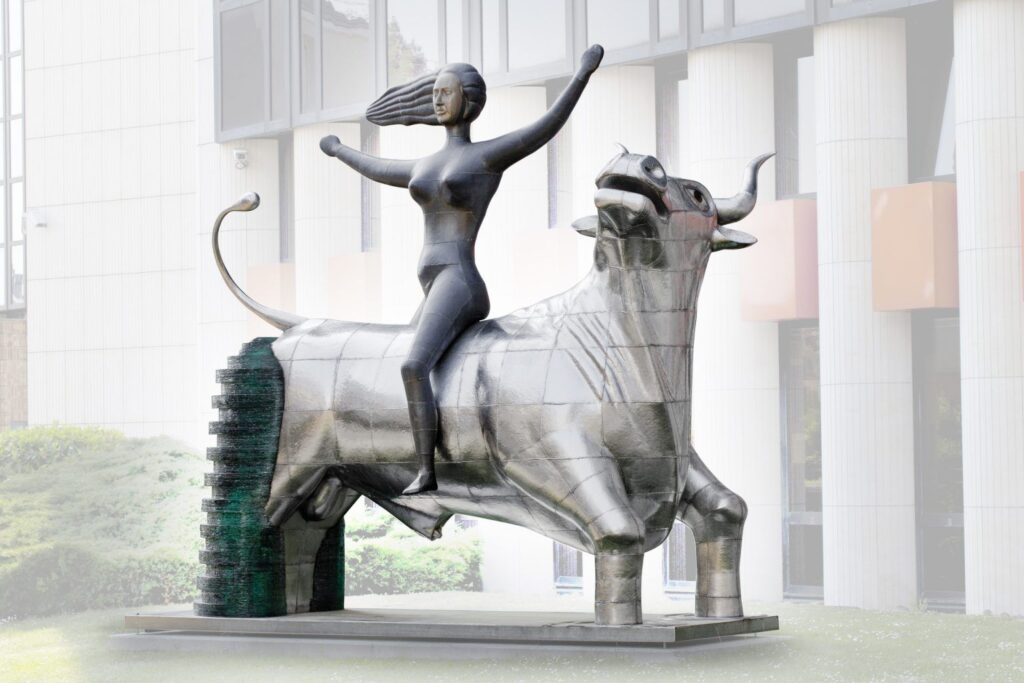
Există deja un precedent în istorie. Mașina IBM Hollerith, care inițial a fost folosită pentru a oferi punched cards poporului american, a sfârșit prin a oferi numere de identificare pentru „indezirabilii” regimului nazist (Wikipedia, IBM and the Holocaust. De asemenea, IBM Verichip and the Fourth Reich, Jan 18, 2022, YouTube). Deci, dacă ne gândim la Marea resetare economică, „Better than Cash Alliance”, ID2020 și tatuajele cu puncte cuantice ale lui Bill Gates sau la criza actuală din Ucraina, care ar putea necesita noi măsuri privind securitatea internațională, ne dăm seama că nu suntem prea departe de acele vremuri când istoria s-ar putea repeta (vezi Mike Williams, Quantum-dot tattoos hold vaccination record, 18 dec 2019, pe news.rice.edu).
Pentru Gilberte Côté-Mercier, Piața Comună a Europei a fost primul pas către guvernul politic mondial. Ceea ce poate fi adevărat. Având în vedere că vechiul sistem bancar ar putea apune sub presiunea Revoluției digitale și a Pieței Digitale Unice. Acest nou imperiu în creștere este un imperiu al datelor, bazat pe stocarea datelor personale prin utilizarea acestui supercomputer fără de care Piața Digitală Unică nu ar putea funcționa. Dar toți oamenii îmbrățișează cu adevărat această Revoluție digitală care va duce în cele din urmă la o societate fără numerar? Într-un articol din 2017, Yves Mersch, fost membru al Comitetului Executiv al Băncii Centrale Europene, spune că majoritatea occidentalilor nu vor să trăiască într-o Europă fără numerar; și că aceasta reflectă în bună parte voința grupurilor de lobby (vezi Yves Mersch, A cashless Europe? The problem is that most people are against it, 3 mai 2017, pe weforum.org).
Nu sunt un exeget al Bibliei. Pentru mine însă, acest supercomputer, alături de sculptura „Femeia călărind Bestia” – a cărei imagine simbolică a apărut și pe timbre, afișe, monede euro și bancnote – trimit la Apocalipsa lui Ioan și la mitul fondator al Europei (vezi EU Plans to Put Picture of Woman Who Rode the Beast on Euro Notes, 16 noiembrie 2012, pe cogwriter.com).
De ce liderii UE ar folosi acest simbolism cu o conotație biblică atât de negativă? Reprezintă oare această guvernare satanică care vine peste noi voința lor într-o Europă creștină? Nu a fost Henri Spaak primul care a cerut cu mulți ani în urmă, înaintea elitei de la Davos, magnaților IT, un Om de o asemenea statură care să ne scoată din haosul economic și l-ar fi primit fie Zeus, fie Diavolul?
Ei bine, într-adevăr, se pare că Bruxelles-ul a primit Fiara.
Două scenarii apocaliptice – Metropolis și The Outer Limits: The Architects of Fear
Poate părea un scenariu apocaliptic. Dar drama de science-fiction expresionistă germană a lui Fritz Lang din 1927, Metropolis, și-a imaginat un astfel de umanoid robot (germ. Maschinenmensch) care, în loc să aducă pace și prosperitate lumii, aruncă Orașul în haos.
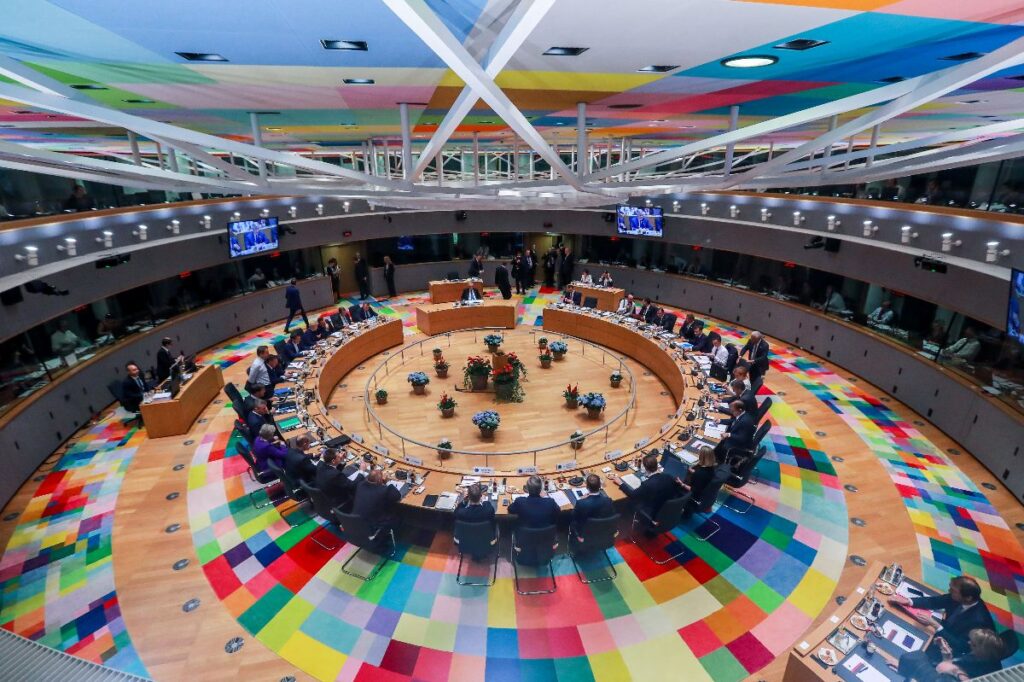
Metropolis a fost inspirat de prima privire a lui Lang asupra New York-ului. Și spune povestea unui oraș viitor, orașul Art Deco din 2026. Un oraș high-tech cu zgârie-nori, autostrăzi înalte și mașini zburătoare, dintr-o lume industrială „divizată sau stratificată social într-o clasă superioară, elită, privilegiată de industriași puternici și o clasă de muncitori/sclavi subterani, fără nume, asuprită și exploatată asemeni furnicilor” (vezi Filmsite Movie Review, Metropolis (1927), pe filmsite.org).
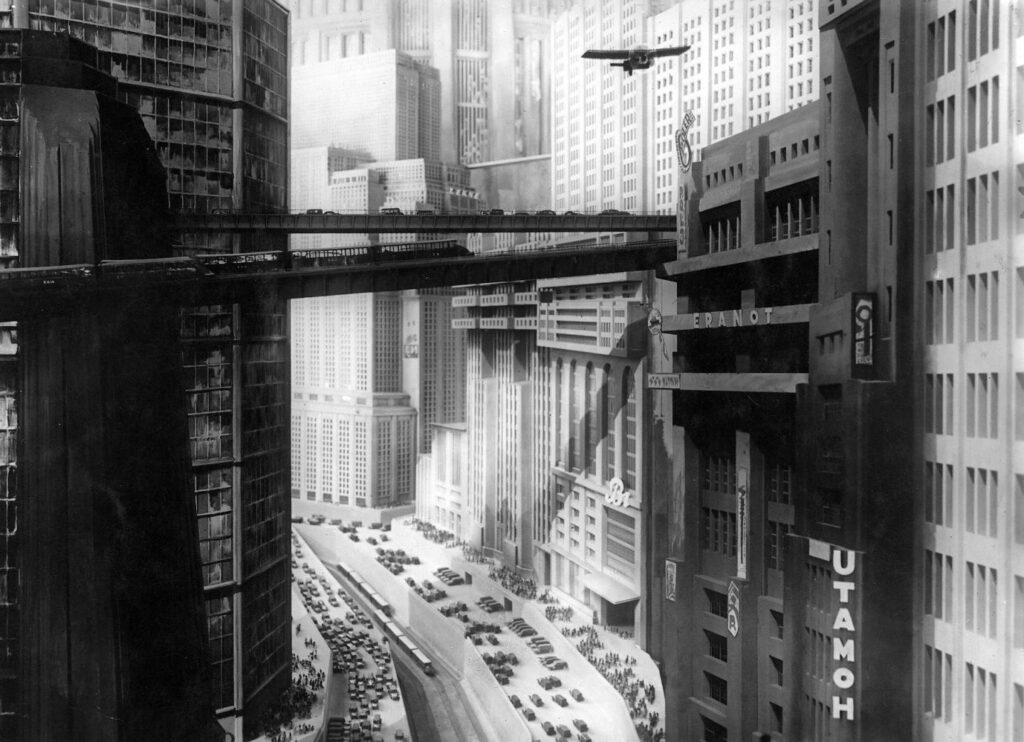
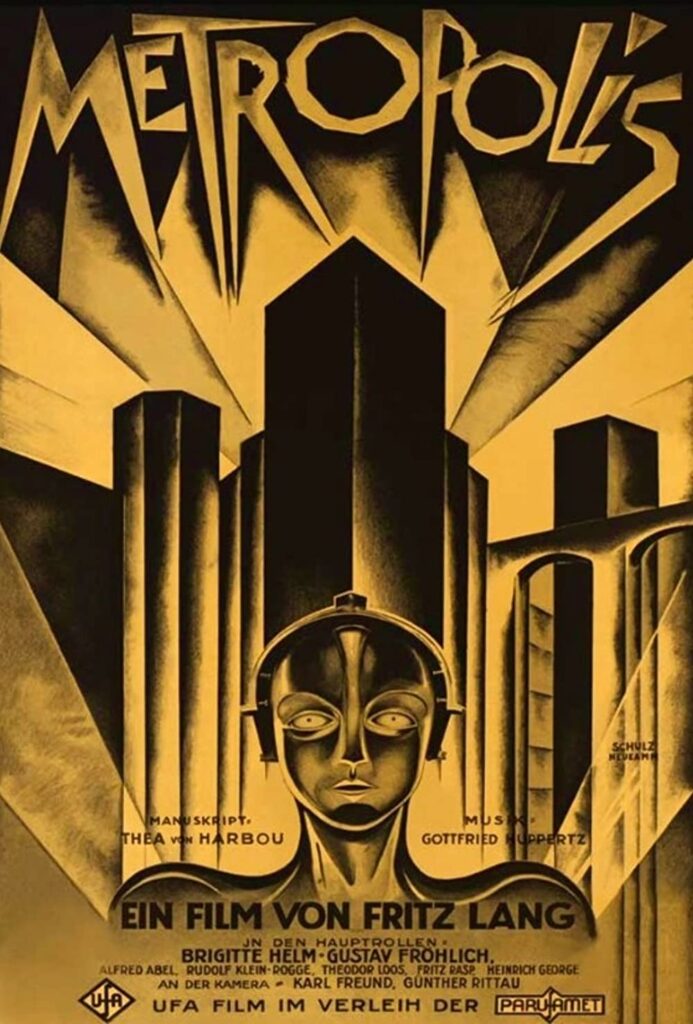
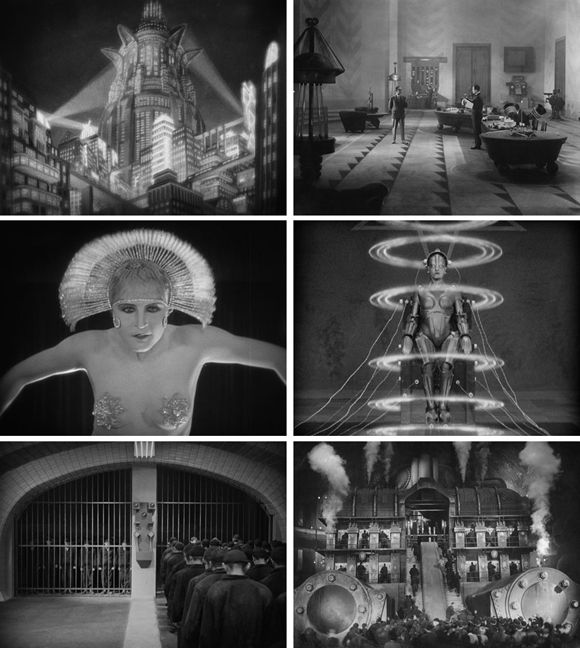
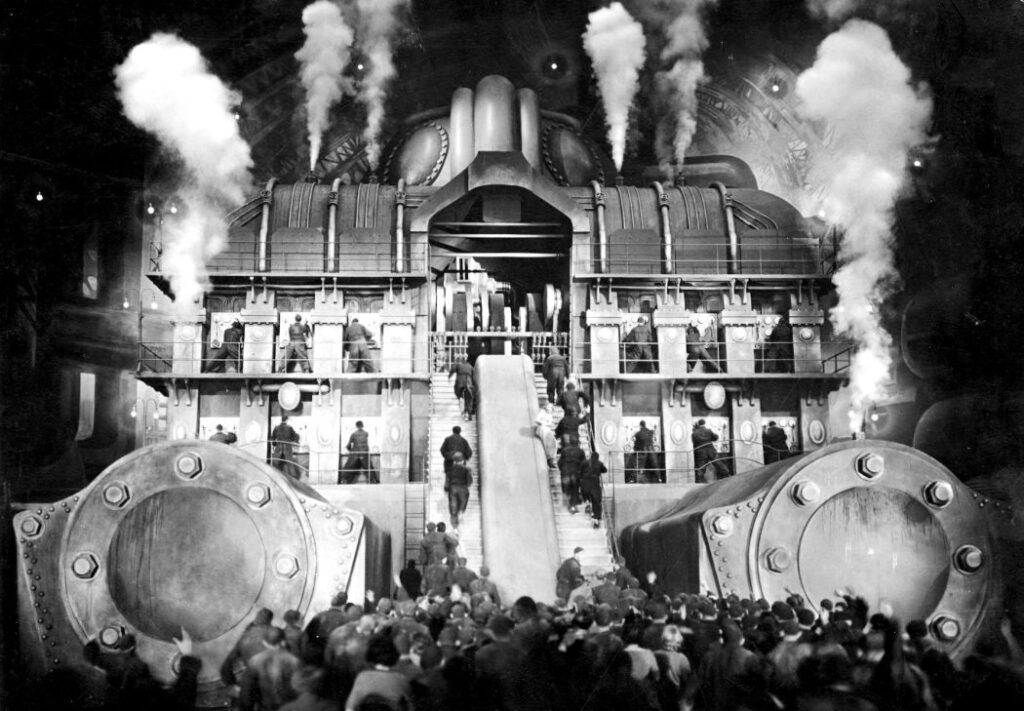
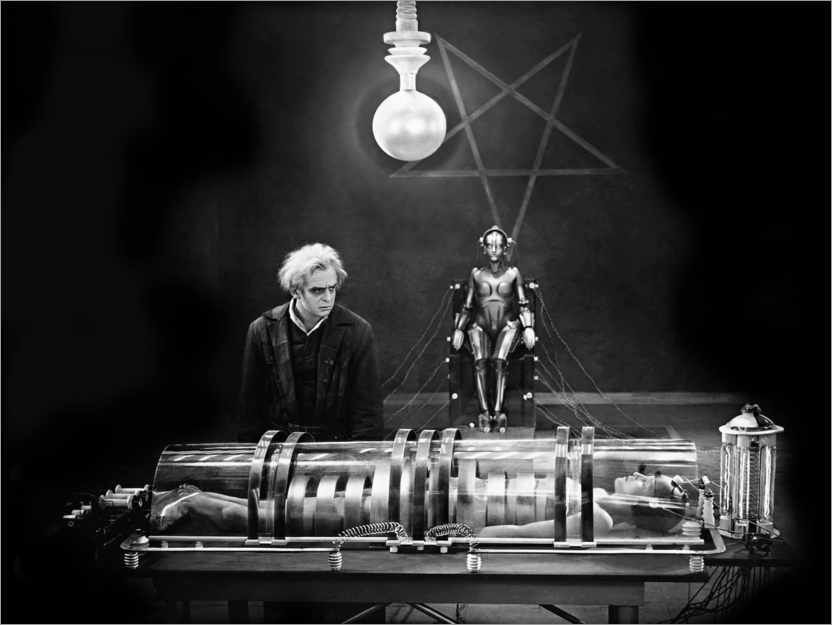
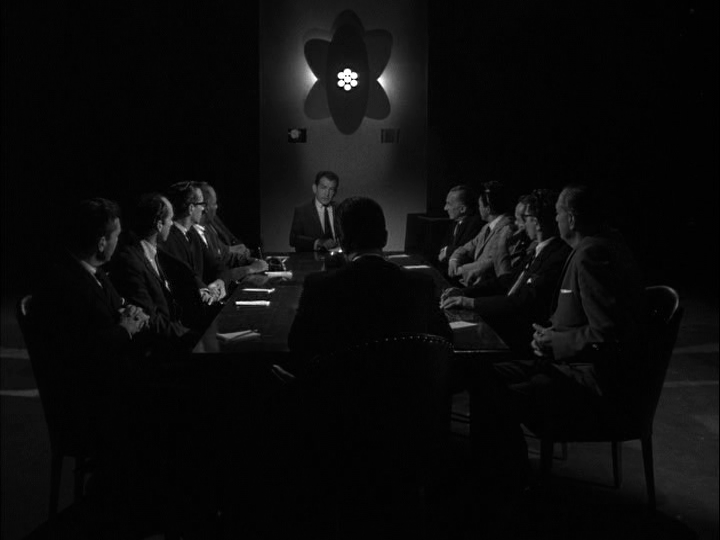
Deși nu pare să părăsească orizontul Manhattanului (fiind inspirat de călătoria lui Lang în America din 1924), amestecă multe surse. De la referințele biblice ale Vechiului Testament la Turnul Babel și Moloch, până la romanul lui H.G. Wells „Mașina timpului”, interioarele Art Deco sau catedralele gotice precum Notre Dame.
În filmul lui Lang, stilul gotic cohabitează cu cele mai variate forme de Art Nouveau. Vedem turle și turnuri, alături de un Stadion Olimpic și de Grădinile Plăcerii. Pentru a realiza acest peisaj urban futurist, cameramanul Günther Rittau, designerul de efecte speciale Eugen Schüfftan și directorul de artă Erich Kettelhut au apelat la diverse surse din arta modernă (Dada, Expresionism, Suprarealism), chiar și la pictura mai clasică a lui Pieter Brueghel cel Bătrân, „Turnul Babel” (vezi eseul lui Brian Eggert, Metropolis, 30 august 2014, pe deepfocusreview.com).
Filmat la Studiourile Babelsberg pentru Universum Film A.G. (UFA) în timpul perioadei Weimar, Metropolis este o repovestire modernă a Turnului Babel. Cu alte cuvinte, o povestire a Iluminismului ce seamănă în multe privințe cu Minunata lume nouă a lui Huxley. Intriga sa în rânduri simple abordează tema diviziunilor sociale, dintre o elită oligarhică și o clasă muncitoare exploatată de această nouă aristocrație a banilor, fără clasă de mijloc între ele.
Filmul se deschide cu o scenă care ne amintește de „Modern Times” a lui Chaplin. În care muncitorii sclavi marșează spre orașul muncitoresc, situat adânc, jos, sub suprafața pământului. Acolo, ei se vor chinui la nesfârșit cu mașini rigide la abur, lucrând în ritmuri monotone, sincopate, ca niște roți dințate într-o mare fabrică de mașini. În lumea subterană a „Fiilor Întunericului”, zeul fenician Moloch cere întotdeauna sacrificii umane. Ei sunt proletariatul dezumanizat. Sau ca-n melodia lui Pink Floyd, doar „Another Brick in the Wall”.
Sus, deasupra solului, locuiește stăpânul Metropolis, Joh Fredersen (Alfred Abel) – creierul, arhitectul orașului, împreună cu fiul său, Freder (Gustav Fröhlich) în Turnul Babel. Alături de cei bogați (fr. le Nouveau Riche) se desfată în Clubul Fiilor („Luminii”) și-n Grădina Eternă a Plăcerilor.
Îndurerat de pierderea soției sale, Joh Fredersen face apel la un savant nebun cu mănuși negre, Rotwang (Rudolf Klein-Rogge) ca s-o „reînvie” pe Hel de la moarte. Rotwang inventează un android feminin care a fost creat după imaginea mamei lui Freder, Hel (Brigitte Helm), dar și a femeii pe care o iubește. Astfel, Hel devine Zeița Metropolis, idolul orașului.
Ziarul De Tijd al vremii, ridica o întrebare foarte bună înainte de premiera olandeză a filmului Metropolis de la Teatrul Rembrant din Amsterdam, și anume dacă numele regretatei soții a lui Fredersens „Hel” are un înțeles simbolic:
„Hel este cuvântul olandez pentru iad. Și deși cuvântul german pentru iad este Hölle, conform mitologiei scandinave, Hel este atât numele zeiței care guvernează lumea subterană, cât și al locului însuși” (vezi Metropolis Courier – The „Uraufführung” of Metropolis in Amsterdam, pe metropolis.mainstream.nl).
Poate că are. Deoarece Hel aduce iadul bogaților și săracilor, pentru tot orașul. Așa se termină povestea. Într-o inundație de coșmar, cu orașul scufundându-se sub apă. Un final apocaliptic adus de această mașină-Hel care, întocmai ca și sculptura „Femeia călărind Bestia” de la Bruxelles, se află sub pentagrame inversate.
Pentru a înțelege mai bine limbajul iconic pe care îl folosește acest film, trebuie să vedem mai întâi fundalul din perioada în care a fost produs. Prima premieră Metropolis a avut loc la Berlin în 1927. An în care Martin Heidegger și-a publicat cartea „Ființă și timp”. Câțiva ani mai târziu, partidul nazist ajunge la putere. Moartea a fost o temă majoră explorată în cartea lui Heidegger, dar devine și un cult pentru partidul nazist. Coincidență sau nu, soția lui Lang, Thea von Harbou care a scris scenariul filmului a fost o mare simpatizantă a noii elite ridicate la putere.
„Filmul-cu-un-mesaj prezintă influența evenimentelor istorice care au avut loc în intervalul de timp al Revoluției Industriale înfloritoare, inclusiv o perioadă de mizerie economică și ascensiune a fascismului în Germania Republicii Weimar înainte de Hitler, de după război, ascensiunea mișcării muncitorești americane și a uniunilor din anii 1920 datorate condițiilor de muncă opresive” și așa mai departe. Arată contrastul dintre muncitorii săraci exploatați de clasele superioare ale anilor ’20, un efect al creșterii imigrației în SUA. Tensiunea dintre managementul capitalist vs. muncă. De asemenea, reflectă interesul elitei pentru robotică, pentru a crea automate umanoide (vezi filmsite.org).
Mesajul său este următorul: mediatorul dintre cap (clasa conducătoare) și mâini (clasa muncitoare) este inima, nu creierul. Ținând cont de faptul că von Harbou s-a alăturat mișcării naziste. Am putea întreba aici dacă nu ne-a sugerat cumva că ar trebui să iubim cu toții elita ariană blondă. Presupun că nu vom ști niciodată. Dar cuvântul Mittler (și anume, Mediatorul) are un ecou înfiorător cu ascensiunea la putere a unei false figuri mesianice cu mustață la acea vreme.
Acest coșmar distopic despre un oraș-stat construit pe muncă de sclavi, care fetișizează tehnologia modernă, prezice clar ideologiile de clasă și de rasă ale secolului XX. Mă întreb dacă nu și pe cea a „totalitarismului inversat” al capitalismului. Metropolis pare să fie mai contemporan ca niciodată. Întrucât nu este AI idolul acestui nou Imperiu babilonian? Sau: „Cine este hrana vie pentru mașinile Metropolis? Cine unge articulațiile mașinii cu propriul sânge? Cine hrănește mașinile cu propria lor carne? Apelul său la revoluție capturează acum, cel puțin pentru mine, era noastră post-fordistă a vampirilor Big Data de la Fitbit la Facebook” (vezi articolele de la The Guardian, 2010, 2020).
Un alt scenariu apocaliptic care bântuie Statele Unite, dar și Europa, îl vedem într-un episod din serialul american de televiziune, The Outer Limits: The Architects of Fear (1963).
În scena de deschidere a filmului, vedem un grup de oameni de știință adunați într-o cameră obscură, în jurul unei mese rotunde, urmărind o proiecție apocaliptică: „Este aceasta ziua? Acesta este începutul sfârșitului?” (vezi The Outer Limits: The Architects of Fear, 7 august 2019, Classic Cinema, pe dailymotion.com). Lumea noastră a intrat „într-un cadru asemănător Războiului Rece în care un holocaust nuclear pare iminent”, spun oamenii de știință.
Pentru a evita o confruntare militară apocaliptică între națiuni, precum un război nuclear, acești oameni de știință foarte idealiști care lucrează la United Labs plănuiesc să organizeze o falsă invazie extraterestră a Pământului în efortul de a uni întreaga umanitate împotriva unui inamic comun perceput („un urs” sau alt monstru imaginar), sub un guvern mondial. Pentru aceasta, ei vor transforma o ființă umană într-o creatură Thetan din spațiul cosmic, precum Vrăjitorul din Oz, folosind bioingineria; și anume, pe unul dintre colegii lor cu un nume providențial Mr. Allen Leighton (altfel spus, Alien Light-on, în jocul de rol al lui Robert Culp). Echipat cu o armă energetică și o navă spațială, el trebuie să aterizeze la sediul Națiunilor Unite pentru a crea o panică inițială și a uni întreaga lume, la fel ca-n Ziua Independenței (vezi recenzia filmului The Outer Limits (1963): The Architects of Fear, pe tvtropes.org.).
„Domnilor,
Aceste națiuni trebuie să se unească. Noi… trebuie să-i facem să se unească. Și, domnilor, îi putem face să se unească. Suntem aici astăzi pentru a continua cu planul nostru.
Ori de câte ori o invazie de bacterii lovește sau se declanșează un incendiu sau o fiară sălbatică cutreieră străzile, atunci, și numai atunci, oamenii încetează să se lupte între ei și lucrează împreună pentru a se salva. Un inamic comun, o frică comună. Acesta este singurul răspuns. Dacă toți oamenii pământului sunt amenințați de un inamic de pe o planetă ostilă…”
Drumul către iad este întotdeauna pavat cu „cele mai bune intenții” pentru umanitate și cu „cele mai bune idei”. Dar, așa cum ne spune filmul în cele din urmă, sperietoarele, vrăjitoria și alte temeri fatale nu apropie oamenii.
Ana-Maria Caminski
Corespondent in Romania, pentru NASUL TV Canada
A new Reich in the Red Dawn of the Digital Era (third part)
For years I believed in European democracy, laws, and institutions, into its political promises for a better life, expecting to bring peace and prosperity to all. Like many of us, I was a naïve believer and swallowed their promises.
Today, believing in the European dream seems to me as illusory as the American one. ‘You must be asleep to believe it’, as George Carlin said about the American dream. I frankly admit that I am not a great admirer of pseudo-democracies, big empires, eternal revolutions, or perpetual wars. Neither a denier of Western culture. I never rejected the West. What I reject is only the garbage that the EU tries to sell us through any kind of means and that does not belong to its inherited tradition.
Maybe the misery was there from the very beginning and I did not see it. A good friend once told me that something is rotten where there is a lot of money. And something was rotten in the way the Pan-European movement received its funding. Something was strange with all the European Communities that followed after, which expanded so quickly and merged into a Union, with their global vision for a Common Market.
The ‘Beast’ from Brussels
This weirdness came out while of a crisis meeting of ’74, called by head leaders of the Common Market in Brussels that gathered many scientists, advisors, and economic analysts, among also was Dr. Hanrick Eldeman. The purpose of the meeting: the economic chaos in which the world seemed to be sinking. The solution: a three-story supercomputer.
‘The Beast’ – how it was called this supercomputer, revealed to the audience by Dr. Eldeman – is a self-programming computer located at the headquarters of the European Commission, in the Berlaymont building in Belgium. And it serves “for registering every person in the world with an 18-digit number, where the initial figure of each number is 666” (see Curiosities of Technology blog, The super computer ‘The beast’, 2015).
Head leaders of the Common Market, the world of International Financiers, alongside IT experts, perfected a master plan for more than a decade to impose a new world system of trade and numbering. In the not-too-distant future, all of the World’s trade will be handled by this gigantic computer which is the brainchild of the Common Market. That will imply a system of digital numbering of each human being.
After Gilberte Côté-Mercier, “the computer would give each inhabitant of the world a number to be used for each purchase or sale, removing the problem of present credit cards”. The number “would be invisibly tattooed by laser, either on the forehead, or on the back of the hand”, and it will be seen only through infrared scanners in public places, establishing thus a new walking credit card system (see the paper-work of Gilberte Côté-Mercier (Québec), ‘The Beast of the Apocalypse: 666, A Gigantic Self-Programming Computer’, in the collective volume of Robert O’Driscoll and Elizabeth Elliott, New world order: Corruption in Canada, 1994).
This was confirmed much earlier by a publication of the time from ’76, Revelations of Awareness newsletter, in which it’s mentioned that “the banking system is prepared to shift its economic system into a computerized system wherein all entities would use a card and a number rather than cash, checks or credit” (see The Mark of the Beast, on https://www.bibliotecapleyades.net).
The government number emitted by the central Beast-computer from Brussels, during a major crisis, will be invisible tattooed through a laser beam or be implanted by a microchip under the skin, which will replace the cash together with the old banking system. This will be the identification number from birth until death for every being on the planet.
Awareness newsletter also says that ‘the Beast’ is closely tied with 270 banks on the European continent, certain banks in the United States and in Russia, and, we’ll add, the World Bank. In the name of economic chaos, of the world’s peace and security, the elite will ask for a world coin and an international print. How far are we from those dark times?
Already exists a preceding in history. The IBM Hollerith Machine, which initially was used to give punched cards to the American people, ended by giving identification numbers for the Nazi regime ‘undesirables’ (see Wikipedia, IBM and the Holocaust. Also, IBM Verichip and the Fourth Reich, Jan 18, 2022, YouTube). So, if we think about the Great economic reset, the ‘Better than Cash Alliance’, ID2020, and quantum-dot tattoos of Bill Gates, or the current crisis in Ukraine that may require new measures on international security, we realize we are not too far from those days when history might repeat (see Mike Williams, Quantum-dot tattoos hold vaccination record, Dec. 18, 2019, on news.rice.edu).
For Gilberte Côté-Mercier, Europe’s Common Market was the first step toward the world political government. Which can be true. Considering that the old banking system might fade under the Digital revolution pressure and of Digital Single Market. This new rising empire it’s a Data Empire, based on the storage of personal data by using this supercomputer without which the Digital Single Market could not function. But do all the people truly embrace this Digital revolution that will finally lead to a cashless society? In an article from 2017, Yves Mersch, ex-member of the Executive Board of the European Central Bank, says that most Westerners do not want to live in a cashless Europe; and that this reflects in good part the will of the lobby groups (see Yves Mersch, A cashless Europe? The problem is that most people are against it, May 3, 2017, on weforum.org).
I am not an interpreter of the Bible. But to me, this Beast-supercomputer, alongside the ‘Woman riding the Beast’ sculpture – of which symbolic image appeared also on stamps, posters, Euro coins, and banknotes – refers to the Apocalypse of John and founding myth of Europe (see EU Plans to Put Picture of Woman Who Rode the Beast on Euro Notes, November 16th, 2012, on cogwriter.com).
Why the EU leaders would make use of this symbolism with such a negative Biblical connotation? Does this satanic governance that comes over us represent their will in a Christian Europe? Wasn’t Henri Spaak the first who required with many years ago, before the Davos elite, of the IT magnates, a Man of such stature to pull us out of the economic chaos, and either Zeus or the Devil would have received it?
Well, indeed, it seems that Brussels has welcomed the Beast.
Two apocalyptic scenarios – Metropolis and The Outer Limits: The Architects of Fear
It may look like an apocalyptic scenario. But the German expressionist science-fiction drama of Fritz Lang from 1927, Metropolis, imagined such a robotic humanoid (germ. Maschinenmensch) that, instead of bringing peace and prosperity to the world, drops the City into chaos.
Metropolis was inspired by Lang’s first glimpse of New York. And tells the story of a Future-city, the Art Deco city of 2026. A high-tech city with skyscrapers, elevated highways, and flying machines, from an industrial world “divided or stratified into an upper, elite, privileged class of powerful industrialists and a subterranean, nameless, oppressed and exploited, ant-like worker/slave class” (see Filmsite Movie Review, Metropolis (1927), on filmsite.org).
Although doesn’t seem to leave the skyline of Manhattan (being inspired by Lang’s 1924 journey to America), it mixes many sources. From the Biblical Old Testament references to the Tower of Babel and Moloch, up to the novel of H.G. Wells ‘The Time Machine’, the Art Deco interiors, or Gothic cathedrals like Notre Dame.
In Lang’s film, the Gothic style cohabits with the most varied forms of Art Nouveau. We see spires and towers, alongside an Olympian stadium and the Pleasure Gardens. To realize this futuristic cityscape, cameraman Günther Rittau, special effects designer Eugen Schüfftan, and art director Erich Kettelhut, appealed to varied sources from Modern Art (Dada, Expressionism, Surrealism), even the more classical painting of Pieter Brueghel the Elder, ‘Tower of Babel’ (see the Essay of Brian Eggert, Metropolis, Aug 30, 2014, on deepfocusreview.com).
Shot at the Babelsberg Studios for Universum Film A.G. (UFA) during the Weimar period, Metropolis it’s a modern retelling of the Tower of Babel. In other words, an Enlightenment story-telling that resembles Huxley’s Brave New World in many ways. Its plot in simple lines tackles the theme of social divides, between an oligarchical elite and a working class exploited by this new aristocracy of money, with no middle class in between.
The film opens with a scene that reminds us of Chaplin’s ‘Modern Times’. Where the slave laborers are marching off to the workers’ city, situated deep, down, under the earth’s surface. There, they’ll toil endlessly with rigid machinery on steaming, working in monotonous, syncopated rhythms, like cogs in a big machine factory. In the underground world of the ‘Sons of Darkness’, the Phoenician god Moloch always requires human sacrifices. They are the dehumanized proletariat. Or like in Pink Floyd’s song, just ‘Another Brick in the Wall’.
Up, above the ground, live the Master of Metropolis, Joh Fredersen (Alfred Abel) – the Brain, Architect of the City, together with his son, Freder (Gustav Fröhlich) in the Babel Tower. Alongside the wealthy (fr. le Nouveau Riche) enjoy themselves in the Club of the Sons (‘of Light’) and the Eternal Garden of Pleasures.
Grieved by the loss of his wife, Joh Fredersen appeals to a black-gloved mad scientist, Rotwang (Rudolf Klein-Rogge) to ‘resurrect’ Hel from death. Rotwang invents a feminine android which crafted in the image of Freder’s mother Hel (Brigitte Helm), but also of the woman he loves. Thus, Hel becomes the Goddess of Metropolis, city’s idol.
De Tijd newspaper of the time, raised a very good question before the Dutch premiere of Metropolis at the Rembrant Theater in Amsterdam, namely if the name of Fredersens late wife ‘Hel’ is meant symbolic:
“Hel is the Dutch word for hell. And although the German word for hell is Hölle, according to Scandinavian mythology, Hel is both the name of the goddess who rules over the underworld and of the place itself” (see Metropolis Courier – The „Uraufführung” of Metropolis in Amsterdam, on metropolis.mainstream.nl).
Maybe it has. Because Hel brings hell to rich and poor, for all the City. This is how the story ends. Into a nightmarish flood, with the City sinking under the water. An apocalyptic ending brought by this Hel-machine which, alike the ‘Woman riding the Beast’ sculpture from Brussels, it’s under inverted pentagrams.
To better understand the iconic language that this film uses, we must see first the background from the period it was produced. Metropolis’ first premiere took place in Berlin in 1927. Year in which Martin Heidegger published his book ‘Being and Time’. A few years later the Nazi party gets to power. Death was a major theme explored in Heidegger’s book but also becomes a cult for the Nazi party. Coincidence or not, Lang’s wife, Thea von Harbou, who wrote the screenplay for the film, was a great sympathizer of the new uprisen elite to power.
“The film-with-a-message exhibits the influence of historical events occurring during its time frame of the burgeoning Industrial Revolution, including a time of economic misery and the rise of fascism in a pre-Hitler Weimar Republic Germany following the war, the rise of the American labor movement, and unions during the 1920s due to oppressive working conditions”, and so on. Shows the contrast between poor exploited workers by the upper-crust classes of the Roaring 20s, an effect of the rise of immigration into the US. The tension between Capitalist management vs. Labor. Also reflects the interest of the elite in robotics, to create humanoid automates (see filmsite.org).
Its message is this: the mediator between the head (ruling class) and the hands (working class) is the heart, not the brain. Bearing in mind that von Harbou joined the Nazi movement. We could ask here, if she did not suggest somehow that we all should love the blond Aryan elite. Guess that we’ll never know. But the word Mittler (namely, the Mediator) has a chilling echo with the rise to power of a false Messianic figure with a mustache at that time.
This dystopian nightmare about a city-state built on slave labour, which fetishizes modern technology, predicts clearly the ideologies of class and race of the 20th century. I wonder if not also on that of Capitalism’ ‘inverted totalitarianism’. Metropolis seems to be more contemporary than ever. Because isn’t AI the idol of this new Babylonian empire? Or: “Who is the living food for the machines of Metropolis? Who lubricates the machine joints with their own blood? Who feeds the machines with their own flesh? Her call to the revolution now captures, at least for me, our post-Fordist era of Big Data vampires from Fitbit to Facebook” (see the articles from The Guardian, 2010, 2020).
Another Apocalyptic scenario that haunts the United States, but Europe too, we see it in an episode from the American television series, The Outer Limits: The Architects of Fear (1963).
In the opening scene of the movie, we see a group of scientists gathered in an obscure chamber, around a round table, watching an apocalyptic projection: “Is this the day? Is this the beginning of the end?” (see The Outer Limits: The Architects of Fear, Aug 7, 2019, Classic Cinema, on dailymotion.com). Our world has entered “a Cold War-esque setting in which a nuclear holocaust appears imminent”, say the scientists.
To avoid an apocalyptic military confrontation between nations, like a nuclear war, these very idealistic scientists working at United Labs plan to stage a fake Alien Invasion of Earth in an effort to unite all humanity against a perceived, common enemy (‘a bear’ or other imaginary monster), under a world government. For this, they will transform a human being into a Thetan creature from the Outer Space, like the Wiz of Oz, by using bioengineering; namely, one of their fellows with a providential name Mr. Allen Leighton (otherwise said, Alien Light-on, in the role-play of Robert Culp). Equipped with an energy weapon and spaceship, he has to land at the United Nations headquarters to create an initial panic and unite the whole world, the same as in the Independence Day (see the film review of The Outer Limits (1963): The Architects of Fear, on tvtropes.org.).
“Gentlemen,
These nations must unite. We… we must make them unite. And, gentlemen, we can make them unite. We’re here today to proceed with our plan.
Whenever a bacteria invasion strikes or a fire rages or a wild beast roams the streets, then, and only then, do men stop fighting each other and work together to save themselves. A common enemy, a common fear. That is the only answer. If all the men of the earth are threatened by an enemy from a hostile planet…”
The road to Hell is always paved with the ‘best intentions’ for humanity, also with the ‘best ideas’. But, as the film does tells us in the end, scarecrows, witchcraft, and other fatal fears do not bring people closer together.
References
Church of God News. EU Plans to Put Picture of Woman Who Rode the Beast on Euro Notes, November 16th, 2012, on cogwriter.com. Web.
De Tijd newspaper. Metropolis Courier – The „Uraufführung” of Metropolis in Amsterdam, February 17, 1927, pp. 6-7. Published online on metropolis.mainstream.nl, 2013. Web.
Deep Focus Review. Metropolis, essay by Brian Eggert, Aug 30, 2014. Web.
Filmsite Movie Review. Metropolis (1927), on filmsite.org. Web.
Guardian. Metropolis, by Peter Bradshaw, 9 Sep 2010. Web.
Guardian. I’ve never seen … Metropolis, by Jeffries Stuart, 27 Mar 2020. Web.
IBM, Verichip, and the Fourth Reich, Jan 18, 2022. YouTube.
IBM and the Holocaust. Wikipedia, web.
Mersch, Yves. A cashless Europe? The problem is that most people are against it. Published on World Economic Forum, May 3, 2017. Web.
O’Driscoll, Robert, and Elizabeth Elliott. New world order: Corruption in Canada. Canada: Saigon Press, 1994. PDF, web.
Outer Limits: The Architects of Fear, Aug 7, 2019, Classic Cinema, on dailymotion.com.
Outer Limits (1963): The Architects of Fear, on tvtropes.org. Web.
Revelations of Awareness newsletter. The Mark of the Beast, 84-2, 1976. Published online on www.bibliotecapleyades.net. Web.
The super computer ‘THE BEAST’, on Curiosities of Technology blog, 2015. Web.
Williams, Mike. Quantum-dot tattoos hold vaccination record. Rice bioengineer reveals dissolving microneedles that also embed fluorescent medical info. United States, Houston, TX: Rice University, Dec. 18, 2019, on news.rice.edu. Web.


